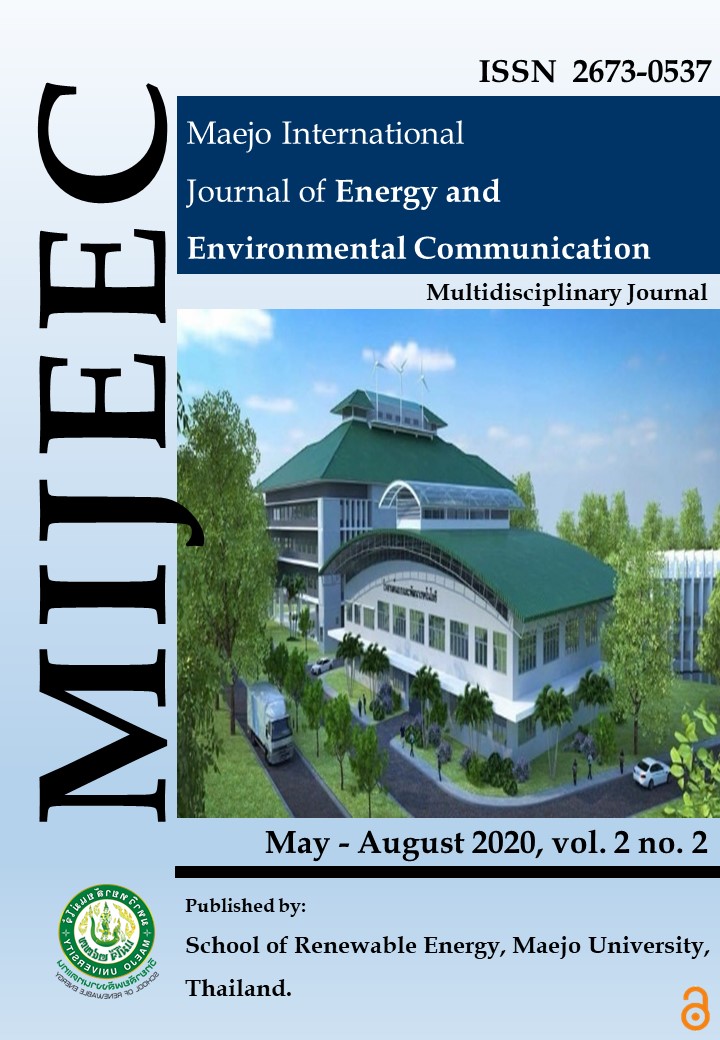Palm oil mill effluent as a potential medium for microalgae Chlorella sp. cultivation for lipid production
Main Article Content
Abstract
Freshwater microalgae Chlorella sp. was isolated from the water body of Taman Gelora, Kuantan, Pahang. The isolated monoculture was cultured in different concentration of POME (10%, 20%, 30%, 40% and 50%, v/v) as substrate. The maximal growth and biomass productivity were found in 30% (v/v) of POME. The maximal dry biomass 1.56 g/L was obtained and extracted 39.1% lipid, approximating similar productivity as in conventional BG-11 medium 1.65 g/L of biomass and 41.5% lipid. Gas chromatography-mass spectrometry analysis shows the composition of fatty acids such as linolelaidic acid, oleic acid, palmitic acid, stearic acid, elaidic acid, and α-linoleic acid dominant. The highest fatty acid is linolelsidic acid (41.69%). POME has the potential to be used as a substrate for microalgae Chlorella sp. cultivation.
Article Details
Copyright © 2019 MIJEEC - Maejo International Journal of Energy and Environmental Communication, All rights reserved. This is an open-access article distributed under the terms of the Creative Commons Attribution-NonCommercial- Attribution 4.0 International (CC BY 4.0) License






